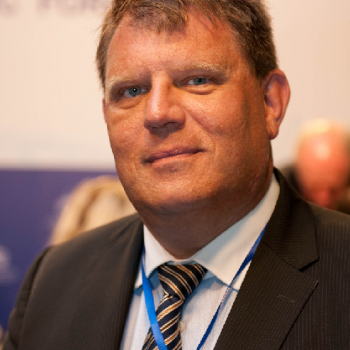jan van schoonhoven

A question I often receive at meetings is how to calculate value for money in PPPs. Many governments hire consultancy services that produce impressive spreadsheets on VfM. Very good, but for those governments who do not have the capacity to afford these services or do not understand the spreadsheet, here are some basics:
What is Value for Money?
The first thing the spreadsheets do is calculate how much ‘cheaper’ a project would be compared with traditional procurement. If that was the case, we would have to name it ‘Cheaper through PPPs’; value is more than money alone. But let’s answer the question just form the financial respective. There are three main components that will give you value for money;
- A well-structured financial deal with good risk allocation;
- Life cycle approach in the project; and
- Management of the operational phase of the contract, the tail

What are the numbers?
A well-structured financial deal with good risk allocation will save you about 10% with a traditional procurement. Over 80% (UK National Audit Office) have budget overruns, sometimes up to 100%. Good PPPs prevent these overruns at the expenses of a government.
Life cycle approach will result in a significant reduction of costs over the 20-30 years of the project, an average of 15-20% can be saved, depending on the type of infrastructure. Good management during the operational life of the contract will save the government an average of 5-10%.
The value for money of a well organised PPP can add up to around 30-40% compared with traditional procurement. A road with an estimated cost of $1000 Million will be reduced to $600-700 Million.
Where do governments lose their value for money?
The eagerness of many politicians and governments to get a project done, especially when election time is in sight, will increase the subsidies and guarantees towards the private sector. The 10% VfM will vaporise and in some cases become negative.
Life cycle is hardly seen in VfM. If governments do not know what a project costs (not how much the budget is but real cost), you never know what you have saved. As most governments do not allocate funding/budget for maintenance this VfM is hardly seen in hard numbers.
Sadly, management of the contract is hardly discussed and receives little attention. Here governments again lose money, in combination with the guarantees and subsidies. In the end, the life cycle will still save money and will reduce costs toward 10%, and our imaginary road will cost $900 Million, if you’re lucky.
How can we get the most out of our VfM?
The real VfM is investing in understanding PPPs at government level and hire good consultancy services (but be in charge). Capacity building is not just a phrase; it is in the end providing you VfM. The Netherlands PPP Unit (20 full time staff, managing 20 projects) had an annual budget of $200.000 for training and capacity building. The average value for money in the PPP projects was and still is between 15-25%, projects ranging between $500 million – $4000 million. The Netherlands audit office calculated that PPPs saved about 400 million Euro in 5 years of PPP; the capacity building budget for the ministry, including the PPP unit, special training for maintenance of the PPP contract and a ‘project academy’ for the project manager within the government was around 5 Million Euro’s over the same period. A net result of 395 million Euro. Still interested in a spreadsheet on VfM?

Jan van Schoonhoven
Senior Advisor on PPP and Innovative Financing for the Netherlands Government
Currently, Jan van Schoonhoven is Senior Advisor on PPP and Innovative Financing for the Netherlands Government. His main role is to develop investment ready projects supported by the Netherlands government in economies in transition. He works for the Intergovernmental Water Centre in The Hague, a center supported by the Ministries of Infrastructure, Foreign and Economic affairs.
From 2012-2015 he was seconded to the United Nations in Genève as Executive Director of the International PPP Centre of Excellence of the United Nations. This center was established by the 56 member countries of UNECE to assist governments in developing a successful PPP pipeline by using best practices and implementing PPP standards. The center closely works with the Multilateral Banks (World Bank en ADB).
Based as a diplomat in Geneva, Jan van Schoonhoven also supported the discussions on the Sustainable Development Goals and the partnership with the private sector with a number of UN organization, like the UNCTAD, and WHO and furthermore at the WTO.
Before the UN, Jan van Schoonhoven was director of the Netherlands PPP Unit and transformed the PPP environment of the Netherlands form 2 projects (2006) to 20 projects and almost 20 Billion Euro’s in 2012. High-speed Rail, the second largest Locks in the World and the second Port of Rotterdam are international know projects.
Jan works for the World Bank on Procurement and PPP and supports the development on PPP of Ghana. He is independent director at the PPP Centre in Kazakhstan and member of the Infrastructure Think Tank of the G20. He also established a PPP center on Aruba, with already two projects with financial close.
Jan van Schoonhoven was born in 1963 and started his career as Officer in the Royal Netherlands Navy in 1982. He did a large number of tours around the world, including UN missions. In 1999 he joined the Ministry of Infrastructure and started as Director of the Coastal Defense and Anti Flooding organization. He lives in The Hague, is married and has three daughters.
Contact details
Jan.van.schoonhoven@rws.nl
+31 6 52596136
https://www.government.nl/topics/public-private-partnership-ppp-in-centralgovernment/

